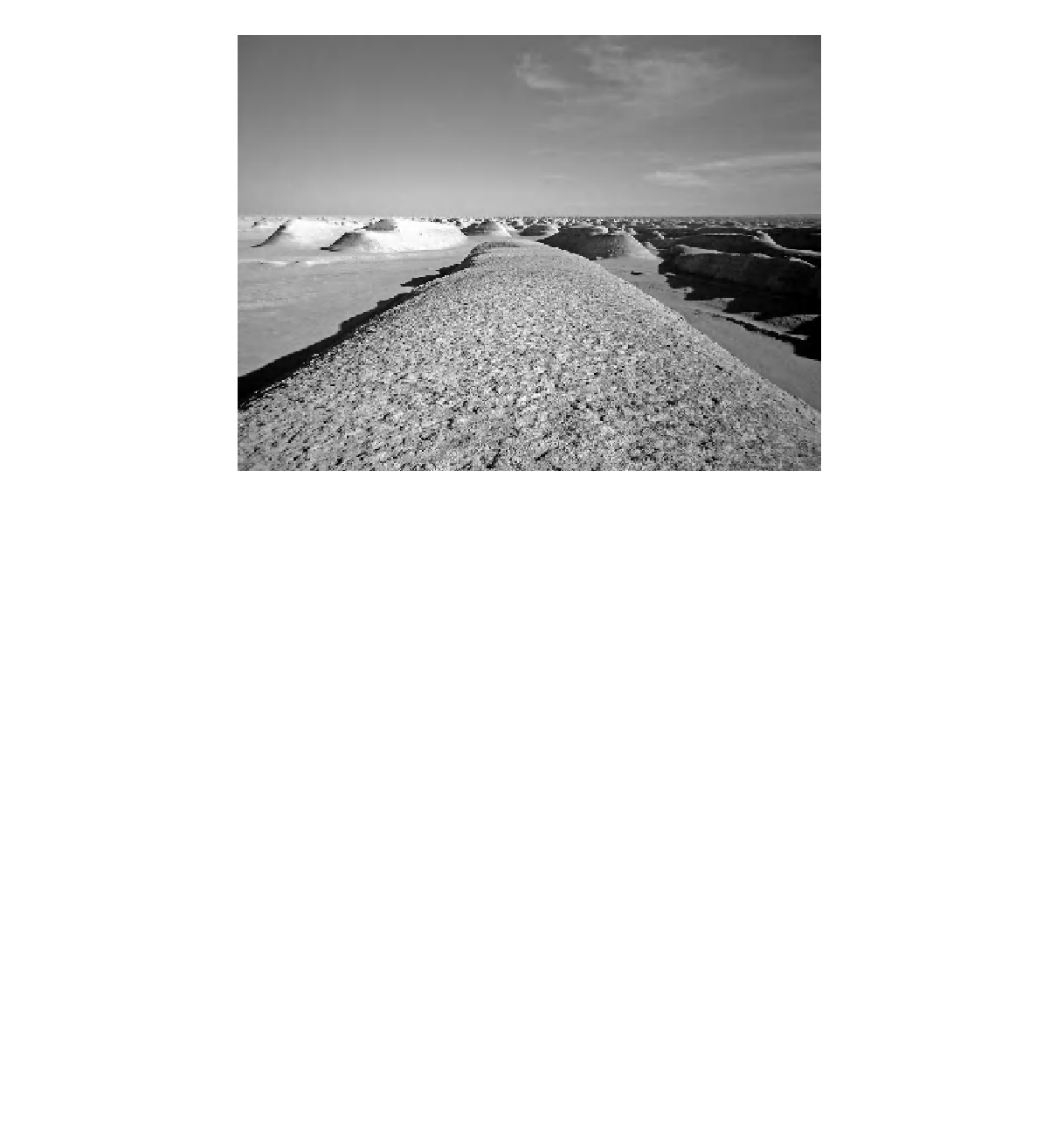Geoscience Reference
In-Depth Information
Figure 21.9
Megayardangs of the Qaidam basin, capped by a salt crust, occur in a vast swarm (photo courtesy of R. Heermance).
21.2.4
Inverted topography
lief within yardang swarms on the limestone plateau in
the Western Desert of Egypt. Inverted relief in the Bodele
Depression, Chad, is interpreted as a deltaic distributary
system (Bristow, Drake and Armitage, 2009), exposed by
up to 4 m of deflation.
A landscape develops inverted relief when previously low
areas, such as river channels, are left standing in relief by
wind erosion at later stages of climatic and topographic
development. There is little detailed documentation of
this landform and therefore this section will largely be
inventory examples of these landforms. In deserts, chan-
nels are commonly more resistant than the surrounding
rocks owing to induration by chemical precipitates. In the
intensely arid south coast of Peru, for example, the du-
racrete enrichment of palaeochannels causes them to stand
in relief on deflated terraces (Beresford-Jones, Lewis and
Boreham, 2009). The best-studied inverted relief is the
Plio-Pleistocene raised channel systems of the western
Sharqiya (Wahiba), Oman. On the western edge of the
Wahiba Sands, these complex high-standing palaeochan-
nel systems cross alluvial fans that have been extensively
lowered by deflation (Maizels, 1987).
Inverted relief is most commonly found within yardang
fields. In the yardang landscape of the Lop-Nor basin,
China, former river courses with resistant silty beds are
inverted and marked by ridges and remnant hillocks
(Horner, 1932), whereas soft, young sediments have been
eroded away by the wind. Similarly, in the hyper-arid re-
gion south of Dakhla, Egypt, intense aeolian erosion has
brought exhumed meander scrolls into sharp relief and
cut them into yardang fields (Brookes, 2003b). Whitney
21.2.5
Ventifacts
Ventifacts are wind-eroded rocks, characterised by their
distinctive morphology and texture. They are found in
periglacial, coastal and desert settings -environments
with an ample supply of abrasive particles, limited
vegetation cover and strong winds (Laity, 1994, 2009).
Many ventifacts, particularly in periglacial and desert
regions, are fossil in nature, the product of earlier surface
and climatic conditions. Relict ventifacts commonly
appear weathered, dulled, stained, lichen-covered or
partly exfoliated (Blackwelder, 1929; Smith, 1967,
1984), darkened by rock varnish or covered by patches
of grooved and fluted surfaces, with intervening areas
eroded by weathering loss (Powers, 1936).
Research into ventifacts, which had been sporadic in
the past, has gained momentum in recent years (Knight,
2008; Laity, 2009; Bridges
et al.
, 2010). Ventifacts are
seen not as mere geological curiosities but as a link in
understanding sediment movement and climate change, as
part of a larger continuum of aeolian studies and as a proxy

